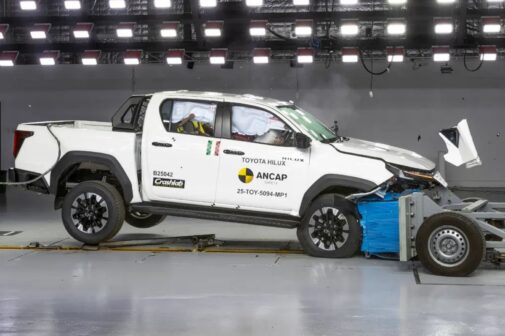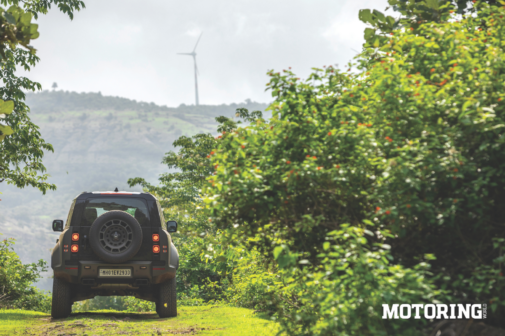The political thug I have for a neighbour rushed to offer me his parking spot. My groceries-seller hollered at me most enthusiastically, for once forgetting my outstanding dues. Little kids scrambled for cover and so did the resident cats. Suddenly, the world around me was a better place. I, having ‘bought’ a Defender, was now a hero to be celebrated and revered. It’s no surprise everyone wants a Defender these days. Those who already own one, want two.
This is no ordinary Defender, though, if there can ever be such a thing. It’s called the Octa Edition One and it’s the most powerful, most expensive Defender ever made. It’s a limited-edition car, with the Edition One only slated to stay in production this year; the Octas that follow will also be limited-run versions, apparently. You see this sort of thing all the time, no? ‘We’ve made a brilliant car. And now we won’t make enough for all of you.’
Porsche does it all the time, with track-specials based on its 911. So does Ferrari, with whatever it makes these days. This is a Land Rover, though. A blue-collared, go-anywhere car for rich farmers and politicians. And wait – why is it wearing a Rs 2.59 crore (ex-showroom, Mumbai) price tag? That translates to over Rs 3.2 crore on-road! Here’s some context. When you buy an Octa, you pay as much to simply register it as you do to buy a registered Skoda Kodiaq. It’s so expensive, in fact, that for how much it costs on-road, you could buy two Defender 110s, on which the Octa is based, and still have money left to buy a registered Skoda Kodiaq. What is it about the Defender Octa that makes it as expensive to buy as a convoy?
You see, in the past, if you found yourself in a tearing hurry to go from 0-100 kph, you had to do it in a Porsche 911 (997) Turbo or a Ferrari 575M Maranello. Low, slippery and made of exotic materials, these were cars best reserved for the racetrack — the Defender Octa is quicker than both of those. Of course, because Land Rover skipped aerodynamics class, the Defender simply compensates with power. Lots of it.
Why, though? I mean, a Defender is, in many ways, the best kind of off-roader Land Rover makes. This means it could come with a three cylinder diesel engine and it would still work. In what frame of mind did someone decide it was a great idea to give it a 626 bhp, 4.4-litre twin turbo V8 sourced from the same BMW that has made it to the cover of this magazine?
Exactly 4 seconds into driving the Octa, I realised my line of questioning had, in fact, been entirely pointless. It’s absolutely frightening how powerful the Octa is. For a car with the aerodynamic properties of a church, it accelerates with such ferocity, such drama, it’s simply unbelievable. The rear squats pronouncedly, with the bonnet rising like the hull of a ship at sea, each time you step on its throttle. And there’s quite an enjoyable soundtrack, courtesy of its V8 that’s also, for some reason, a mild-hybrid. I had no expectations of frugality from it — and that’d be okay if the Octa kept up this level of performance.
It did. Okay, it lacks the utterly raspy sportscar-ish feel of the Range Rover SVR from some years ago — that came with a 5.0-litre supercharged V8 it shared with the Jaguar F-Type — but, given the Octa’s dimensions and dynamics, it feels as brutal, if my memory serves me well. It sounds less dramatic in comparison, perhaps, especially since current emissions norms deprive it of pops and crackles, but it still delivers an exciting soundtrack, especially when you open its exhaust valves by pressing a conveniently placed button on the dash.
This, then, is a ‘Mad Max’ Defender. A Land Rover on steroids with just an incredible amount of power and with responses that will make you rub your eyes in disbelief. I don’t think there’s anywhere in the real world where you can really go flat-out with it, and that’s fair, too, because the Octa, with its slab-like proportions, can singularly affect climate change.
You don’t, however, buy a Defender for its straight-line speed, or for speed at all. You buy it, at best, to look important. That, even the ‘standard’ Defender manages with exceptional ease, which explains why it’s among Land Rover’s most successful cars, ever. In India alone, over a thousand people bought a Defender in 2024. This year, even more will buy one. By the way, don’t in any way give in to the fear of missing out, because Land Rover has no choice but to continue making these. And over the years, the Defender and its derivatives are only going to get progressively better. Edition One? Great! Wait till you see Edition Two.
What is it about the Octa in particular, then, that makes it such a headline act? If you rely on Land Rover to answer that, it might tell you about its 48-volt mild-hybrid system or about — wait for this — its cutting-edge vibro-acoustic Body and Soul Seats which include six wellness programmes. Sigh! No, that’s not the point of it at all. Here’s the thing. Unlike every other performance SUV — the Mercedes Benz G63 AMG, the Lamborghini Urus or, for that matter, the Range Rover SVRs — the Defender gets even better off the road in its all out performance spec. So, while it’s a huge step up in its road performance, the off-road drop-off that usually comes with this class of SUVs simply doesn’t exist. Sure, the G63 is more charming in some ways and the Urus is supposedly terrific around a racetrack, but the Defender Octa goes where you wouldn’t dare take anything else.
With its 6D Dynamics air suspension, which is a combination of hydraulic interlinked dampers and height-adjustable air springs — and the small matter of 76.4 kgm of torque — the Octa is simply brilliant at Defender-ing. For a car that’s allegedly been tested around the Nurburgring (has anyone seen a video? I haven’t), it rides rather pleasantly and, to be honest, I enjoyed driving it slowly even more. In the rain-lashed countryside, over B-roads barely wide enough to accommodate the Octa’s massive footprint, it cruises beautifully, effortlessly absorbing undulations. In a way, it feels like a more honest Range Rover, the way they used to make them a couple of decades ago.
In Octa mode, the ABS calibration changes and most of its power (I think more than 70 per cent of it) is sent to the rear wheels. As a result, what you get are Dakar levels of performance. The slow bits, the Defender already takes care of very well — I mean, it’s got over 320 mm of ground clearance in off-road mode, and a water wading depth of 1 metre. But, honestly, you could do most of the slow stuff in a Jimny or a Thar; the Octa is about going flat out, anywhere.
Who goes off-roading in a car that expensive, though? Nobody, to be exact. But the idea behind the Octa, if I understand it correctly, is that you can. I’ll be honest, when Land Rover announced the Octa, I thought it was a gimmick, a PR statement on steroids. It isn’t, though. It’s a charming brute of a car, overflowing with character and personality. I really did think it was an overzealous idea, yet another wasteful toy for the super rich, but amazingly, the Octa badge has made it even more of a Land Rover, in a literal sense. On a different note, does anyone know how to start a career in politics?





















